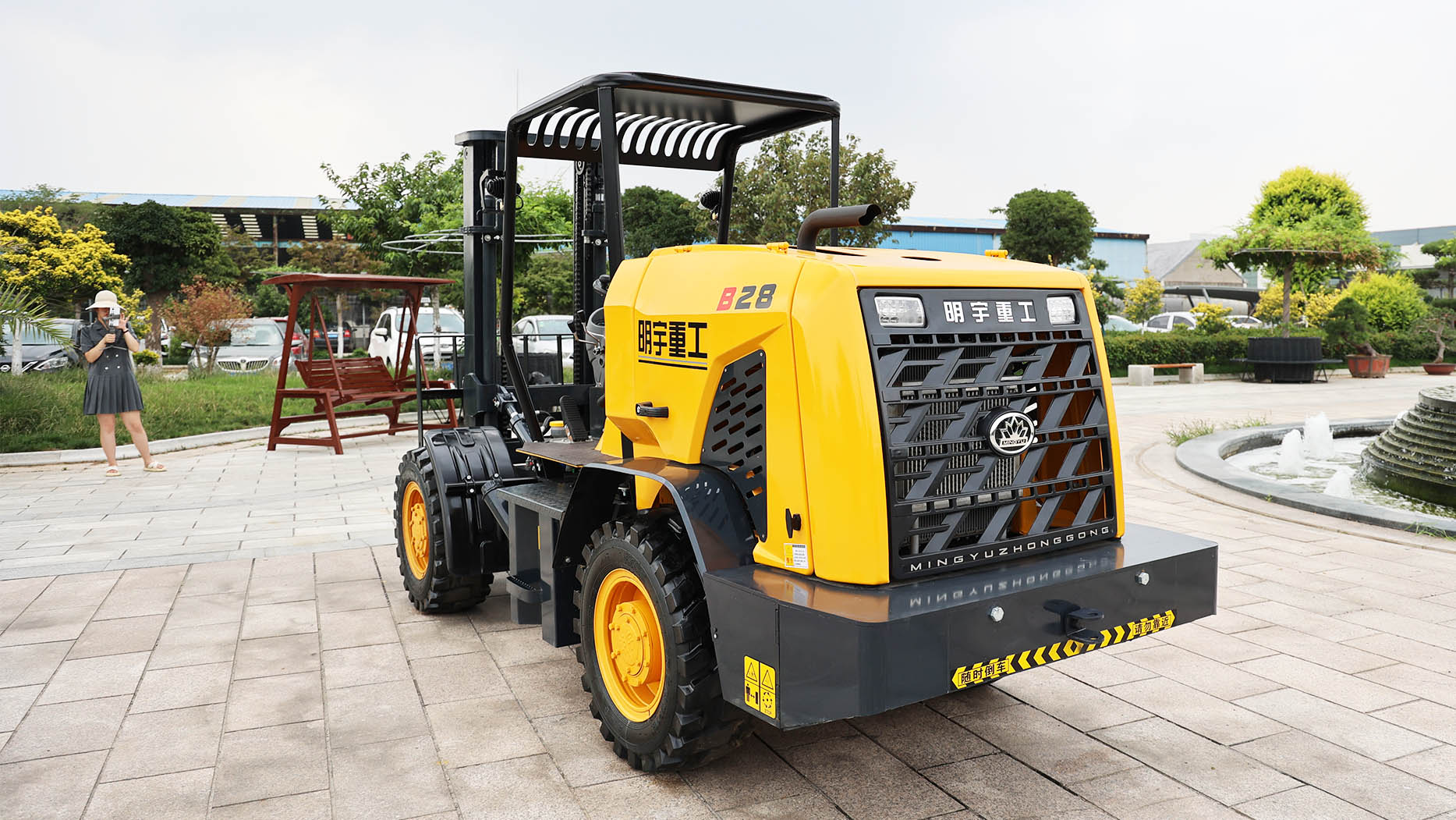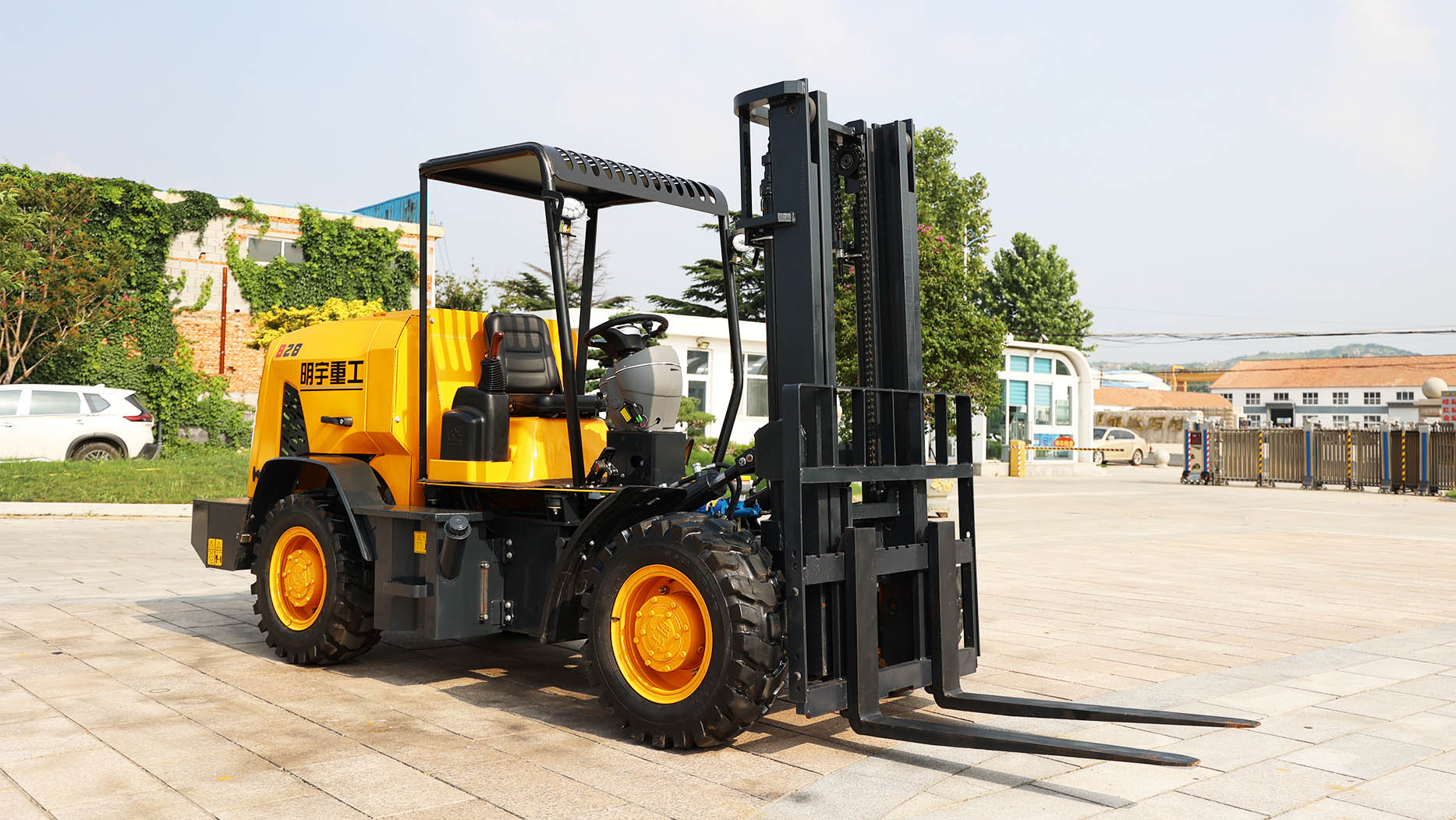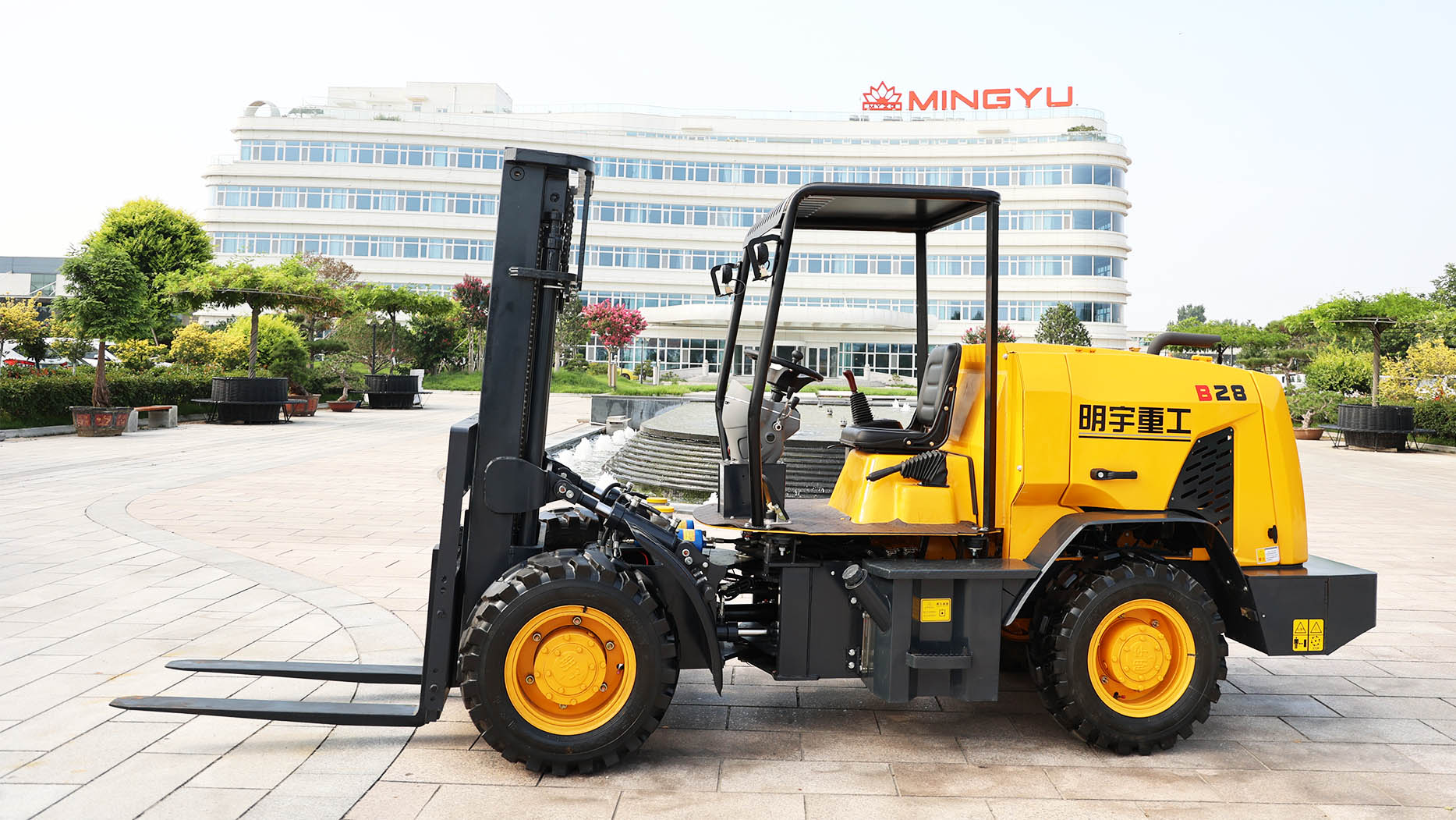When it comes to handling materials on challenging job sites, rough terrain forklifts are the go-to solution. These robust machines are built to conquer uneven ground, mud, and debris, ensuring materials keep moving where standard forklifts would fail. However, within the realm of rough terrain models, a critical choice emerges: do you opt for a telescopic rough terrain forklift (commonly known as a telehandler) or a straight mast rough terrain forklift?
While both are designed for outdoor, rugged environments, their fundamental lifting mechanisms and inherent capabilities differ significantly. Understanding these distinctions is paramount for selecting the right machine to maximize efficiency, enhance safety, and ensure cost-effectiveness for your specific applications. It’s not just about lifting capacity; it's about the type of reach and versatility you truly need.
Understanding the Core Differences
Let's first clarify the fundamental design and function of each type:
1. Straight Mast Rough Terrain Forklift:
This machine looks much like a traditional industrial forklift but is heavily beefed up for outdoor use. It features a vertical mast (either two-stage or three-stage) that moves the forks straight up and down. Some models can tilt the mast forward or backward for stability on inclines.
Primary Purpose: Lifting and placing loads directly in front of the machine, typically for vertical stacking, loading/unloading trucks at ground level, or transporting materials over rough ground.
Key Characteristics: Excellent stability, robust lifting capacity for its size, simple operation, and often a lower profile than a telehandler.
2. Telescopic Rough Terrain Forklift (Telehandler):
This machine features a telescopic boom (like a crane) that extends forward and upward from the chassis. The forks are attached to the end of this boom, allowing for not just vertical lift but also significant forward reach.
Primary Purpose: Lifting and placing loads at height or over obstacles, reaching into structures, over trenches, or across gaps. It combines the functions of a forklift with some capabilities of a crane or a work platform.
Key Characteristics: Exceptional forward and upward reach, high versatility with a wide range of boom-mounted attachments, but often less stability when the boom is fully extended or raised with heavy loads.

Key Differentiating Factors to Consider
When making your choice, evaluate these critical aspects of your operation:
1. Reach and Placement Capability
This is the most significant differentiator.
Straight Mast Rough Terrain Forklift:
Reach: Primarily vertical lift. Forward reach is limited to the length of the forks plus a small amount of mast tilt.
Placement: Best for placing materials directly in front of the machine or for stacking vertically. Ideal for ground-level loading/unloading of trucks or setting materials on a scaffold next to the machine.
Application Fit: Stacking lumber in a yard, unloading flatbed trucks, moving pallets on a construction site next to where they are needed, handling materials on relatively confined ground-level areas.
Telescopic Rough Terrain Forklift (Telehandler):
Reach: Unmatched forward reach (up to 50+ feet or more) and significant upward reach. The boom can extend horizontally or at an angle.
Placement: Can place loads over obstacles (e.g., fences, trenches), into upper floors of buildings, across gaps, or precisely position materials at a distance from the machine's base.
Application Fit: Feeding materials into windows on upper floors, placing trusses on a roof, reaching over excavations, reaching into the middle of a job site from its perimeter, setting up scaffolding from a distance, or acting as a mobile work platform.
2. Versatility and Attachments
Both are versatile, but their attachment systems define different types of versatility.
Straight Mast Rough Terrain Forklift:
Versatility: Primarily excels as a heavy-duty forklift. While it can use attachments like various buckets, grapples, and some jibs, its core design focuses on fork-based lifting directly in front.
Common Attachments: Standard forks, wide carriage forks, sometimes buckets for light bulk material, jibs for light crane work, and material handling arms.
Telescopic Rough Terrain Forklift (Telehandler):
Versatility: The king of multi-functionality. The boom's end can accept a wide array of boom-mounted attachments, making it highly adaptable.
Common Attachments: Standard forks, truss booms (for lifting roof trusses), buckets (for loading bulk materials), grapples, winches, access platforms (man baskets), sweepers, and specialized clamps. Many telehandlers are designed to quickly switch between these.
Application Fit: Construction sites requiring diverse tasks, large agricultural operations needing to reach into high silos, demolition for material sorting, or any job where multiple elevated tasks are required from one machine.
3. Stability and Load Charts
This is a critical safety and operational consideration.
Straight Mast Rough Terrain Forklift:
Stability: Generally more stable for vertical lifts with heavy loads, as the load is always close to the machine's front axle. The center of gravity remains more consistent.
Load Chart: Simpler load charts, primarily showing capacity at various lift heights.
Safety: Less prone to tipping when lifting maximum capacity vertically, provided the terrain is managed.
Telescopic Rough Terrain Forklift (Telehandler):
Stability: Stability decreases significantly as the boom extends forward or upward with a load. These machines operate strictly by a complex load chart that dictates maximum capacity based on boom extension, height, and outrigger deployment (if equipped). Overloading or exceeding reach limits is extremely dangerous.
Load Chart: Complex load charts require careful adherence by the operator. Many modern telehandlers have load management systems that warn or even prevent unsafe lifts.
Safety: Requires highly trained operators who understand load charts and stability limitations. Outriggers (stabilizers) are often necessary for heavier lifts or extended reach to enhance stability.
 4. Footprint and Maneuverability
4. Footprint and Maneuverability
Consider the amount of space you have to operate in.
Straight Mast Rough Terrain Forklift:
Footprint: Relatively compact for their lift capacity, but their length can be a factor.
Maneuverability: Good for linear travel on job sites. Turning radius is comparable to a large truck.
Application Fit: Working in more confined outdoor areas where direct front-to-back movement is sufficient.
Telescopic Rough Terrain Forklift (Telehandler):
Footprint: Often has a larger overall footprint and longer wheelbase, especially when the boom is extended.
Maneuverability: Can have 2-wheel, 4-wheel (crab steer), or circular steering modes, offering good maneuverability for their size, but the boom adds an extra dimension of space consideration.
Application Fit: Best for open job sites where the machine has ample room to maneuver and extend its boom without hitting obstacles.
5. Cost Considerations (Purchase, Operating, Maintenance)
Budget and long-term costs are always significant factors.
Initial Purchase Price:
Straight Mast Rough Terrain Forklift: Generally lower initial investment for comparable lift capacity than a telehandler, primarily due to simpler mechanics.
Telescopic Rough Terrain Forklift (Telehandler): Typically a higher initial investment due to the complex boom mechanism, sophisticated hydraulics, and advanced safety systems.
Operating Costs:
Fuel: Both are usually diesel powered. Fuel consumption depends on engine size and intensity of use. Telehandlers, especially when frequently extending the boom, might consume more.
Tires: Large, specialized rough terrain tires are expensive for both.
Maintenance:
Straight Mast Rough Terrain Forklift: Generally simpler hydraulics and mechanical systems, potentially leading to lower maintenance complexity and cost.
Telescopic Rough Terrain Forklift (Telehandler): The telescopic boom, its associated cylinders, wear pads, and more complex safety systems can require more specialized maintenance and parts, potentially leading to higher costs. The boom itself can also be more susceptible to damage if not operated carefully.
The Role of Manufacturers: MYZG / MINGYU
Brands like MYZG and MINGYU(which often refer to Chinese manufacturers like Mingyu Group or similar) are increasingly providing both types of rough terrain forklifts at competitive price points.
MYZG / MINGYU Straight Mast Rough Terrain Forklifts: They offer robust, reliable diesel-powered models that are strong contenders for straightforward outdoor lifting and carrying tasks. Their focus is often on delivering essential power and durability at a value price, making them accessible for smaller construction firms or agricultural businesses.
MYZG / MINGYU Telescopic Rough Terrain Forklifts: As their product lines expand, these brands are also entering the telehandler market. While they may not have the full range of specialized attachments or advanced safety features of premium Western brands, they offer a more affordable entry point for businesses needing that crucial forward and upward reach. Buyers should thoroughly investigate local dealer support for parts and service, as the complexity of telehandlers demands reliable post-purchase support.
 Making the Right Choice for Your Operation
Making the Right Choice for Your Operation
The decision between a telescopic rough terrain forklift and a straight mast rough terrain forklift hinges on a clear understanding of your primary tasks:
Choose a Straight Mast Rough Terrain Forklift if:
Your primary need is to lift and place heavy materials vertically or directly in front of the machine (e.g., stacking, ground-level loading/unloading).
You operate in areas with relatively limited overhead or forward clearance.
You prioritize maximum stability for direct, heavy lifts.
You prefer a machine with simpler mechanics and potentially lower maintenance complexity.
Your budget is more constrained, but you still need robust outdoor lifting.
Choose a Telescopic Rough Terrain Forklift (Telehandler) if:
Your primary need is to place materials at significant heights or, crucially, with considerable forward reach over obstacles, into structures, or across gaps.
You require a versatile machine that can function as a forklift, a small crane (with a jib), and potentially an aerial work platform (with a man basket).
Your job sites are open enough to accommodate the machine's extended footprint and boom movements.
You have operators highly trained in understanding and adhering to complex load charts.
You need to minimize the number of machines on a site by having one do multiple functions.
In many larger operations, both types might even be present, each deployed for tasks where its unique capabilities offer the greatest efficiency. The straight mast handles the bulk of vertical lifts and transport, while the telehandler steps in for all tasks requiring reach or specialized elevated work.
Ultimately, by carefully analyzing your typical job requirements, the nature of the terrain, the specific materials you handle, your budget, and the available support from manufacturers like MYZG / ZGLOADER, you can confidently select the rough terrain forklift that will be the most productive, safe, and cost-effective asset for your business.
Post time:Jul.14.2025
